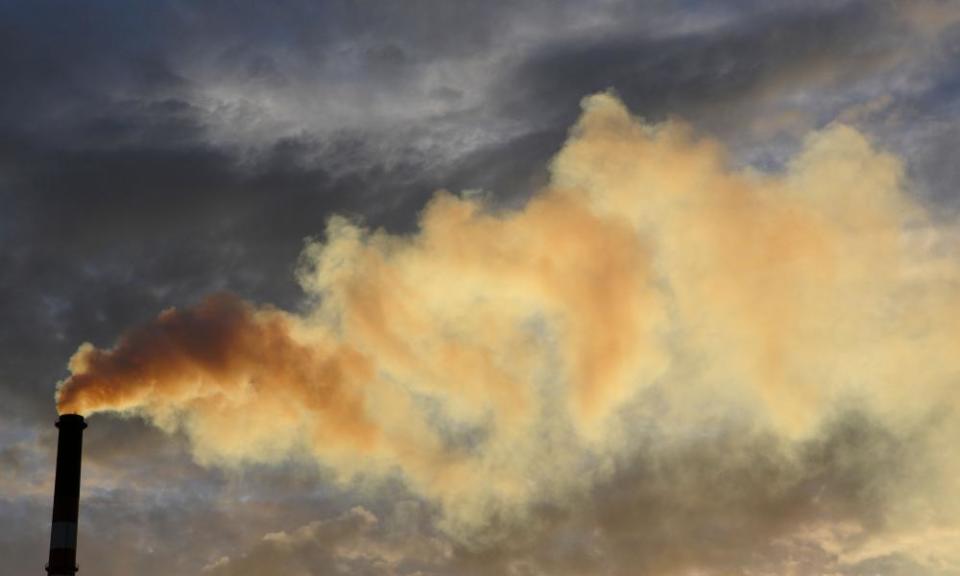Yes, Australia's emissions are falling – but it's a hollow boast

The latest greenhouse gas emissions data released on Friday were a mixture of some good news combined with the sorrow of how far we have to go and how much time we have wasted.
Once the carbon price was removed in 2014, Australia’s greenhouse gas emissions took off – rising ever higher under the lack of climate change leadership of Tony Abbott, Malcolm Turnbull and Scott Morrison.
In less than two years under the carbon price, Australia’s annual greenhouse gas emissions fell 2.4%, and in the same time after the carbon price was repealed they rose 2.8%.
Related: Australia's greenhouse gas emissions fall slightly as new clean energy comes online
By September 2018 our emissions, excluding “land use”, were 5% above the lowest point achieved during the carbon price period and were the highest they had even been.
And so it is good news that finally our emissions are falling – and falling quite quickly:
But that good news comes with a couple of caveats.
The first is that even with the recent falls, Australia’s annual emissions still remain nearly 4% above the low point of March 2014:
Secondly, the main reason for the fall in emissions is the large introduction of renewable energy in 2018. But as Adam Morton noted last week, that was driven by the national renewable energy target, which “was filled last year and has not been replaced”.
Morton also notes that a Reserve Bank research paper published in March found that “investment in renewable energy has moderated from its recent peak and is likely to decline further over the next year or two”.
So the good news is decidedly muted.
We should note that the emissions produced by the bushfires over the summer do not count towards the total account. It is assumed the trees will grow back, and thus, unlike logging, it is not technically a land use measure.
Land use of course has a long history of being used for very dodgy purposes. We alone get to count it towards our Paris target of 26% below 2005 levels, which makes our task absurdly easier:
Excluding land use, Australia’s 2019 emissions were 4.5% above 2005 levels, but when you include it, our emissions have fallen 13.3%!
Land use is also subject to some pretty bizarre measurement changes.
This time last year the government estimated that in 1990 (the base year for our Kyoto target, which in turn affects our Paris target) Australia emitted 172.9Mt of CO2; now the government estimates it was 183.2Mt.
It’s amazing that we can discover, nearly 30 years after the fact, that we had emitted 6% more than we once thought:
When you exclude land use, the government’s target of a 26% cut from 2005 levels becomes a mere 12% - absurdly small, and pointless. And yet even that looks beyond this government.
There has also been some silly reporting of this latest release, suggesting it shows we are on track to meet the 26% cut target (when including land use).
The Australian’s Graham Lloyd, for example, led his report stating, “Australia is halfway towards meeting its 2030 Paris agreement target for greenhouse gas emissions”.
That is true enough, but you could have almost said the same thing six years ago.
At the end of 2013 we were 47% of the way towards the 2030 target, now we are 51% of the way.
Bragging about being halfway is like getting driven in a car to the 20km mark of a marathon, waking slowly for 1,500m and then boasting that you have run half a marathon.
And it ignores that we also need to increase the pace to achieve the final half of the 26% cut:
But we must always remember that it is not just about the target, but the path there – every year’s worth of emissions adds to the overall total.
That is why a 50% cut by 2030 is so important – it not only leads to a lower level, it reduces the amount of greenhouse gas we emit from now until 2030.
A 50% cut target would see us emit around 880Mt of CO2 less between now and 2030 than we if we did actually reach the current 26% target – equivalent to around 20 months’ worth of current emissions:
But had we continued on the path we were on from 2009 to 2013, things could have been so much better.
Not only were we on the path to a 59% cut in emissions, we would have emitted just over 2,000Mt less of CO2 by 2030 – or just under four years worth of current emissions.
Not cutting emissions now only means needing to cut more later, and at a certain point no matter how much we cut, it won’t be enough.
• Greg Jericho writes on economics for Guardian Australia

 Yahoo Finance
Yahoo Finance 